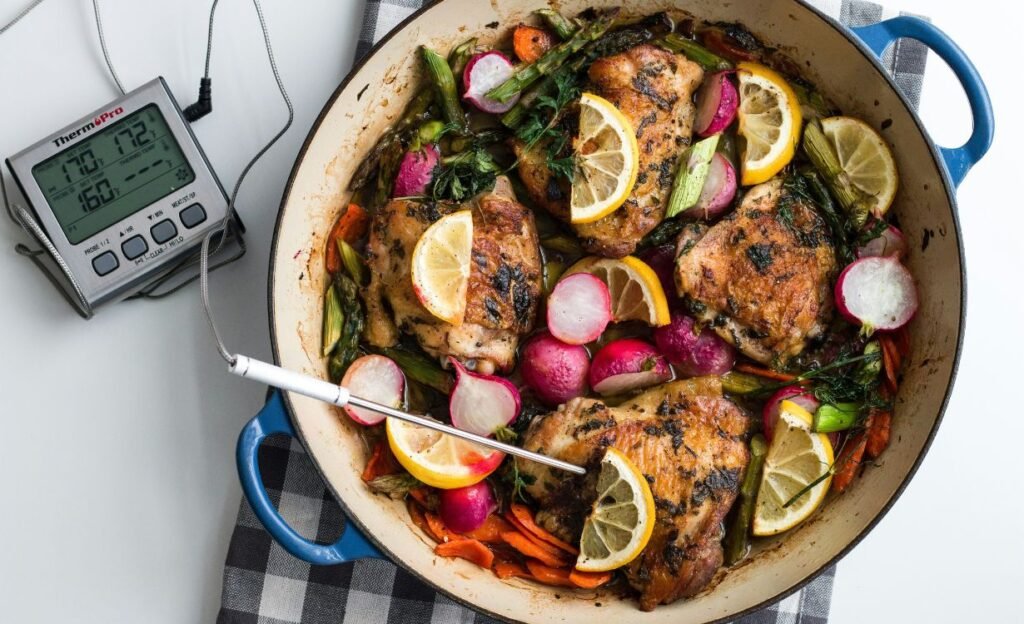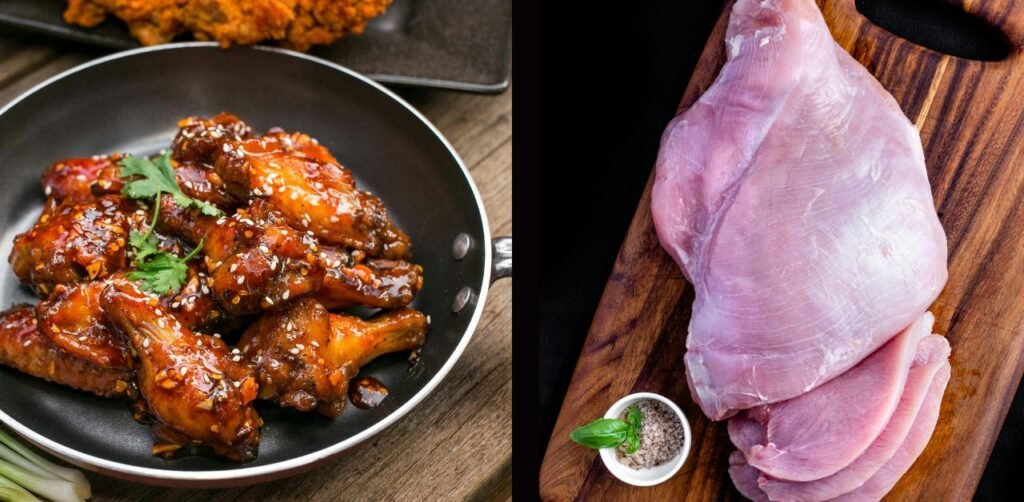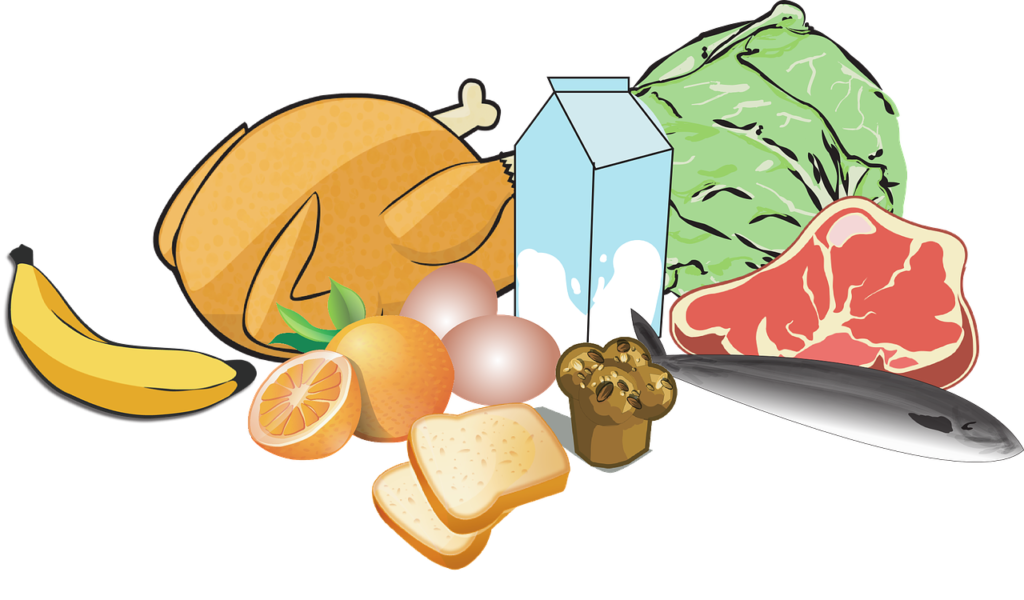Eating undercooked fried chicken can have severe health consequences due to the harmful bacteria that thrive in raw or improperly cooked poultry.
Consuming chicken that hasn’t reached the recommended temperature can lead to foodborne illnesses, causing symptoms like diarrhea, vomiting, and stomach cramps.
These illnesses can be particularly dangerous for vulnerable populations such as children, the elderly, pregnant women, and those with weakened immune systems.
This post will explore the risks associated with undercooked chicken, present relevant statistics, discuss the bacteria involved, and provide comprehensive preventive measures during storage, preparation, cooking, and post-meal stages.
Dangers of Undercooked Chicken
The primary danger of undercooked fried chicken is the risk of food poisoning.
Harmful bacteria such as Campylobacter, Salmonella, and Clostridium Perfringens are commonly found in raw poultry.
If chicken is not cooked to the appropriate internal temperature, these bacteria can survive and cause illness when ingested.
The ideal temperature for bacterial growth is called the temperature danger zone (TDZ)
Symptoms of foodborne illnesses range from mild gastrointestinal discomfort to severe dehydration and hospitalization.
Vulnerable individuals, such as young children, the elderly, pregnant women, and those with compromised immune systems, are particularly at risk of severe illness and complications.
Proper food handling and cooking practices are crucial to minimize these risks and ensure the safety of your meals.
Statistics on Undercooked Chicken Illnesses

Foodborne illnesses caused by undercooked chicken are alarmingly common.
According to the Centers for Disease Control and Prevention (CDC), about 1 million people in the United States suffer from foodborne illnesses related to poultry each year.
Many of these cases are linked to undercooked chicken.
Campylobacter infections affect approximately 1.5 million people annually, with poultry being a significant source.
Salmonella causes about 1.35 million infections, 26,500 hospitalizations, and 420 deaths in the U.S. each year.
Clostridium perfringens is responsible for nearly 1 million cases of food poisoning annually.
These statistics underscore the importance of thoroughly cooking chicken to prevent these illnesses.
Harmful Bacteria in Raw Chicken
Campylobacter
Campylobacter is a leading cause of bacterial food poisoning.
Found in the intestines of poultry, it can contaminate chicken meat during processing.
Symptoms of Campylobacter infection, or campylobacteriosis, include diarrhea (often bloody), fever, stomach cramps, nausea, and vomiting.
These symptoms typically appear 2-5 days after consuming contaminated chicken and usually resolve within a week.
Severe cases can lead to complications such as irritable bowel syndrome (IBS) and Guillain-Barré syndrome (GBS).
Salmonella
Salmonella is another dangerous bacterium commonly associated with raw or undercooked chicken.
Infection symptoms, including fever, stomach cramps, diarrhea, nausea, vomiting, and headaches, usually develop 6 hours to 6 days after exposure.
While most people recover without treatment, severe cases may require hospitalization, especially for those at higher risk.
Clostridium perfringens
Clostridium perfringens is often found in meat and poultry that has been cooked and kept warm for an extended period.
Symptoms of infection include diarrhea and abdominal cramps, typically appearing 8-12 hours after consuming contaminated food and lasting less than 24 hours.
Although infections are usually mild, they can be severe for people with compromised immune systems.
How to Identify Undercooked Chicken
Visual Inspection
Color: Properly cooked chicken should have no pink or red hues. The meat should be white and opaque.
Pink or translucent meat indicates that the chicken is undercooked.
Juices: Cut into the thickest part of the chicken and check the juices.
Clear juices indicate that the chicken is fully cooked, while pink or bloody juices suggest it needs more cooking.
Temperature Measurement

Meat Thermometer: The most reliable method to ensure chicken is cooked is to use a meat thermometer.
Insert the thermometer into the thickest part of the chicken, avoiding bone, fat, or gristle.
The internal temperature should reach at least 165°F (74°C).
Multiple Checks: For large pieces or whole chickens, check the temperature in multiple spots to ensure even cooking.
Texture and Smell
Texture: Properly cooked chicken should be firm and not rubbery or jiggly.
Undercooked chicken may feel soft and slightly springy.
Smell: Fresh, cooked chicken should have a mild smell.
If the chicken has an off or raw smell even after cooking, it may not be fully cooked.
Protective Measures to Prevent Foodborne Illnesses
Storage Stage
Proper Refrigeration: Store raw chicken in the refrigerator at or below 40°F (4°C) to slow bacterial growth.
Use a refrigerator thermometer to ensure accurate temperature control.
Separate Storage: Keep raw chicken separate from other foods, especially those that are ready-to-eat, to prevent cross-contamination.
Use sealed containers or plastic bags to store chicken and place it on the lowest shelf to avoid juices dripping onto other foods.
Timely Use: Use raw chicken within 1-2 days of purchase or freeze it for longer storage.
Frozen chicken should be kept at 0°F (-18°C) and used within six months for best quality.
Preparation Stage
Proper Thawing: Thaw frozen chicken safely by placing it in the refrigerator, allowing 24 hours for every 4-5 pounds of chicken.
You can also use the microwave’s defrost setting or place the chicken in a sealed plastic bag and submerge it in cold water, changing the water every 30 minutes.
Clean Hands: Wash your hands thoroughly with soap and water for at least 20 seconds before and after handling raw chicken.
Separate Equipment: Use separate cutting boards, knives, and utensils for raw chicken and other foods.

Label these items to avoid cross-contamination.
Avoid Washing Chicken: Do not wash raw chicken before cooking, as this can spread bacteria through splashing water onto kitchen surfaces and other foods.
Sanitize Surfaces: Clean and sanitize all surfaces, cutting boards, and utensils that come into contact with raw chicken.
Use hot, soapy water followed by a disinfectant solution.
Cooking Stage
Use a Meat Thermometer: Ensure chicken reaches an internal temperature of at least 165°F (74°C).
Insert the thermometer into the thickest part of the meat, avoiding bone, fat, or gristle.
Check Juices and Color: Properly cooked chicken will have clear juices and no pink color.
Cut into the thickest part to check if the meat is white and opaque.
Even Cooking: Cook chicken evenly by avoiding overcrowding in the pan or grill. Flip pieces halfway through cooking to ensure uniform heat distribution.
Rest Chicken: Let cooked chicken rest for a few minutes before serving.
This allows juices to redistribute, ensuring moist and thoroughly cooked meat.
Post-Meal Stage
Proper Storage of Leftovers: Refrigerate leftover chicken within two hours of cooking.
Use shallow containers to cool food quickly and store it at or below 40°F (4°C).
Reheat Safely: Reheat leftover chicken to an internal temperature of 165°F (74°C) before consuming.
Use a microwave, oven, or stovetop for even heating.
Avoid Cross-Contamination: Keep cooked chicken away from raw foods and use separate utensils and plates for serving.
Monitor Shelf Life: Consume leftovers within 3-4 days. If in doubt, throw it out to avoid the risk of foodborne illness.
Conclusion
Undercooked fried chicken poses significant health risks due to harmful bacteria such as Campylobacter, Salmonella, and Clostridium perfringens.
Each year, millions of people suffer from foodborne illnesses caused by consuming undercooked or improperly handled chicken.
To protect yourself and your loved ones, follow these preventive measures:
- Storage phase: Refrigerate raw chicken properly, separate it from other foods, and use it promptly.
- Preparation phase: Practice good hygiene, use separate equipment for raw chicken, thaw chicken safely, and sanitize surfaces.
- During Cooking: Cook chicken to an internal temperature of 165°F, use a meat thermometer, and ensure even cooking.
- Post-Meal: Store leftovers promptly, reheat safely, and avoid cross-contamination.
By following these guidelines, you can enjoy your chicken meals safely and reduce the risk of foodborne illnesses.
Remember, taking the extra steps to ensure your chicken is fully cooked is worth it for your health and well-being.



